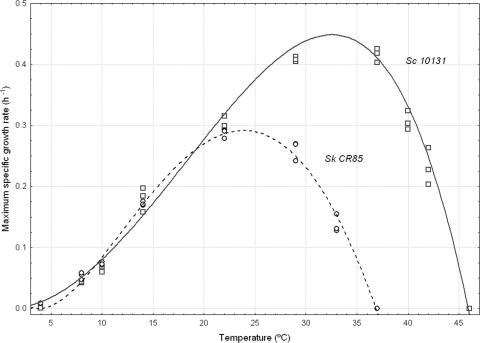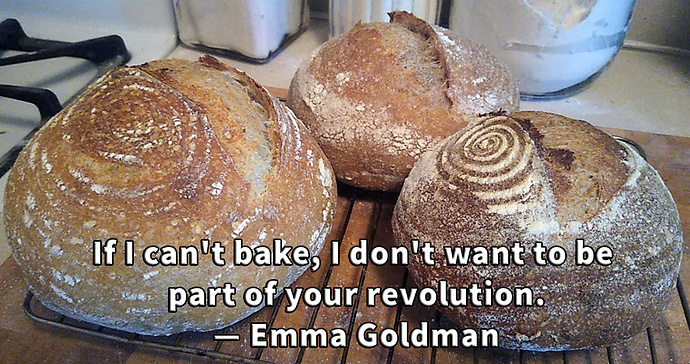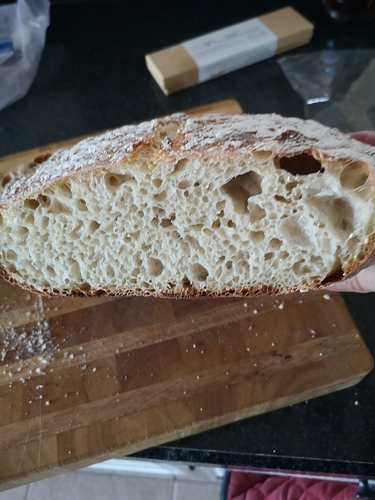Here is where we discuss the finer points of baking that are too advanced for the proletariat cooks here, and test how good our SEO is. If social revolution won’t bring the masses here, maybe the sourdough bread revolution can. Post your sourdough recipes, sourdough starter questions, and anything else related to baking sourdough bread. We’ll even boths sides this and accept regular breads.
No shame in posting bad food. Everyone’s got to start somewhere. I’ve never done sourdough, but SE had a recent article that you might find helpful:
You got a starter 10 years ago and have fed it once per week and this is the first time you’ve actually used it to bake?
Look and taste sounds like it’s underproved.
Time proofing the levain may be too short if it’s only 4 or 5 hours. Do a float test before mixing levain into dough.
Proofing times are only guidelines, you need to get a feel for what it should look/feel like at every step. Levain should float. After fermentation dough should be kinda bouncy, jiggly. Shaped dough needs to have good surface tension and hold its shape for a while, still be jiggly.
72% is on the wet side for a beginner and with all purpose flour imo. it’ll be easier to maintain tension with less. Also getting some bread flour will make it easier. Also less while wheat.
Good luck with that. I check any time I’m in a store that sells flour and I haven’t seen it since early March.
Costco has some. Orlando so ymmv but still. 50lb bags tho. What I can’t find anywhere is whole wheat.
We got a 50 pound bag at Sams Club in February and that’s the last time I’ve seen it anywhere near me. That bag is long gone, and we’ve just been buying all purpose the past couple of months.
Totally agree. For me the experiment is 90% of the fun. Half the time I don’t even care about eating what I make.
This is how I used to feel about charcuterie back when I made it professionally.
Infrequently ate it, but obsessed with making it.
I assume you mean actually making the meat and cheese and not just cutting it up on a board which is what I mean when I tell people “I made charcuterie”. 
Ok so this motivated me to try a higher hydration dough. 80%, 20% levain. Also went with a long autolyse – overnight so like 7 hours.
Overproved I think, very little oven spring. Taste is fantastic though. The long autolyse gives it the sweet nuttiness, faster fermentation keeps it from getting too sour. Plenty of lactic acid production but not enough time for much acetic acid production is what I think is going on.
Looks ok, maybe more than halfway there? take a teaspoon out and see if it floats. How much flour vs water (by weight)? Also seems like a lot? Mine is just 50g starter, 100g flour & water.
I wouldn’t sweat the temperature. As long as it’s below 100, warmer → faster rise, less sour. If it floats well it’s time to add it to the dough.
Feeding directly into the starter never worked out well for me but ymmv.
W/r/t timings & temps, not sure about the growth rate /temp curves for the yeast. Maybe @Danspartan or the google does. The important thing is to get a feel for what the dough looks/feels like when it’s over/under/properly proved.
Roughly 3 hours or a little less to double at room temp. Given there is some self heat generation assume 2.5 hours.
So if you starter is
1/2 then 2.5h
1/4 then 5h
1/8 then 10h

How does that compare to say, 90f and 40f?
I’m sure geeking out about every little aspect of the process helps make better sourdough – it’s certainly the case with beer – but don’t let that intimidate you from giving it a shot. I made it for a couple of years without ever using a thermometer or worrying about precise water measurements or anything like that. And I made some damn good bread while also having a few clunkers. Give it a shot and then decide just how deep you want to get into controlling the process.
Jesus it’s like porn? Man those look good.
Are you giving some of these away on the regular? They look fantastic, but I’m not sure how you could possibly eat as much bread as you seem to make.
Bread geeks,
I don’t know what the technical terms are, but when you cut into a bread what kind of holes are you looking for. Is there something that is considered optimal, or is it personal preference. I really haven’t given it much thought, but I think I prefer more numerous and smaller holes, but maybe that’s just what I’m used to from non home-made breads.
This is exactly my problem. Everyone is drooling over these breads, and I’m thinking, how the hell am I supposed to eat that without mangling it.
90f Is 32c. 40f is 4.5c. Only the top solid curve for S cerevasiae is relevant.
Ln(2)/growth rate = doubling time.
Ln(2)=0.693
Looks like 32c is near the peak which is pushing a 40 minute doubling time.
You have to guard against operating too close to the max temp as the growth reaction itself generates heat and it is possible to damage the culture if there is no way to remove heat.
At refrigeration it grows very slowly. Would take on the order of 3 days to double.


